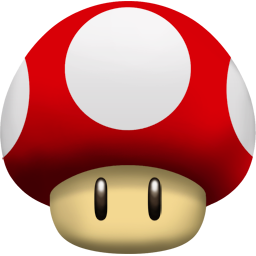How, in fact, 2-3-day-old children see the world right after birth

The newborn is a child in the first 28 days (the first 4 weeks of life) from the moment of birth. This time he spends between eating and sleeping, practically not honoring his mother's attention and not distinguishing the day from the night. His body is incredibly vulnerable in this period, so he especially needs attention from his parents. The main need of a little man in the first month of life is a physical contact with his mother, warmth and mother's milk.
After a birth all parents, not giving to the child to get on in a new world, start to lisp and hoot with it. But is there any sense in this?
When these little tufts of joy appear, parents spend a lot of time grimacing and parodying emotions in the face of the child in the hope of causing them a smile.

But did you ever think about what actually sees a newborn baby and does he see you with his one-day eyes?
In the figure below, you can see how 2-3-day-old children see people's faces at a distance of 30 to 120 cm. Scientists have found out that regardless of the grimace that you writhe in front of the child, he still will not see it if Your face will be at a distance from his eyes more than 30 cm

This is due to the fact that the child's eyes after birth still continue to evolve and his vision has not yet adjusted to a vision of this world.
In any case, even if the child saw what you are doing with the muscles of your face, he would still not understand what you want to convey to him. Yes, you yourself do not know.
What does the newborn see?
- Immediately after birth, the child is able to respond to the presence or absence of light;
- In the first month of the general blurry picture, the child distinguishes between large objects;
- Then he begins to monitor their movements, as well as the passing parents;
- At 3-4 months the baby monitors moving toys;
- By the age of six months, a child can observe small objects and recognize "their own".
What does the kid like to look at?
- Most newborns like to look at their parents' faces. Most often the object of their love is the face of the pope, thanks to distinct features, beard or mustache;
- A change in the usual appearance of the parent can cause discontent of the baby. At best, he simply turns away, worse, begins to cry and be capricious;
- Even newborns like to look at black and white patterns, figures or photos.
What does the newborn see?
- In the first week of life, the child does not stop looking at the surrounding objects for more than three to four seconds;
- In two months the sight is focused better, but still does not stop, but slides on the subject;
- Only by four months can the child focus on the subject;
- Sometimes newborns can slightly "mow down" the look. This phenomenon is due to the fact that children can not use both eyes together. This is considered normal up to six months. However, if this happens all the time, then it's better to see a doctor;
How to establish contact?
- It is noticed that in an upright position, newborn children are able to focus their eyes. Therefore, in order to attract the child's attention, one should take it vertically;
- After that, you need to wait a while until the baby concentrates;
- Your face or object should be about twenty to twenty-five centimeters from the child's eyes;
- Toys in the crib should be hung not in front of the child's face, but a little further - on the side, or behind the legs;
- You should speak calmly, quietly enough, while it is better if your face has a smile and a "live" facial expression.
Reflexes of the newborn
In total, the newborn demonstrates 75 reflexes. Among them:
- Reflection Moreau. The child withdraws his hands to the side with the extension of the fingers (I phase), then returns to the starting position (II phase) (with the arms movements are the character of the covering of the trunk), after 15-20 cm from the child clap on the surface on which the Child, or after a quick extension of the legs.
- Robinson's reflex. Is manifested in the fact that the child clings tightly to the fingers of an adult, embedded in his hands.
- Suckling reflex. It consists in the fact that the baby starts rhythmically sucking any object that appeared in his mouth.
- Proboscis reflex. The child extends his lips (which resembles the proboscis) in response to a touch to them.
- Search reflex Kussmaul. In response to a touch in the corner of the mouth, the child immediately stretches his lips toward the stimulus.
- Protective reflex. The thing is that the child lying on his stomach, immediately turns his head to one side, so as not to suffocate.
Experts believe that the reflexes of Moreau and Robinson helped our distant ancestors in infancy to hold on to the mother's fur during the movement. The search, proboscis and sucking reflexes "answer" for the baby to discover the food source. A protective reflex is necessary for the survival of an infant.
Via 4tololo.com & razvitie-krohi.ru & wiki


Comments
When commenting on, remember that the content and tone of your message can hurt the feelings of real people, show respect and tolerance to your interlocutors even if you do not share their opinion, your behavior in the conditions of freedom of expression and anonymity provided by the Internet, changes Not only virtual, but also the real world. All comments are hidden from the index, spam is controlled.